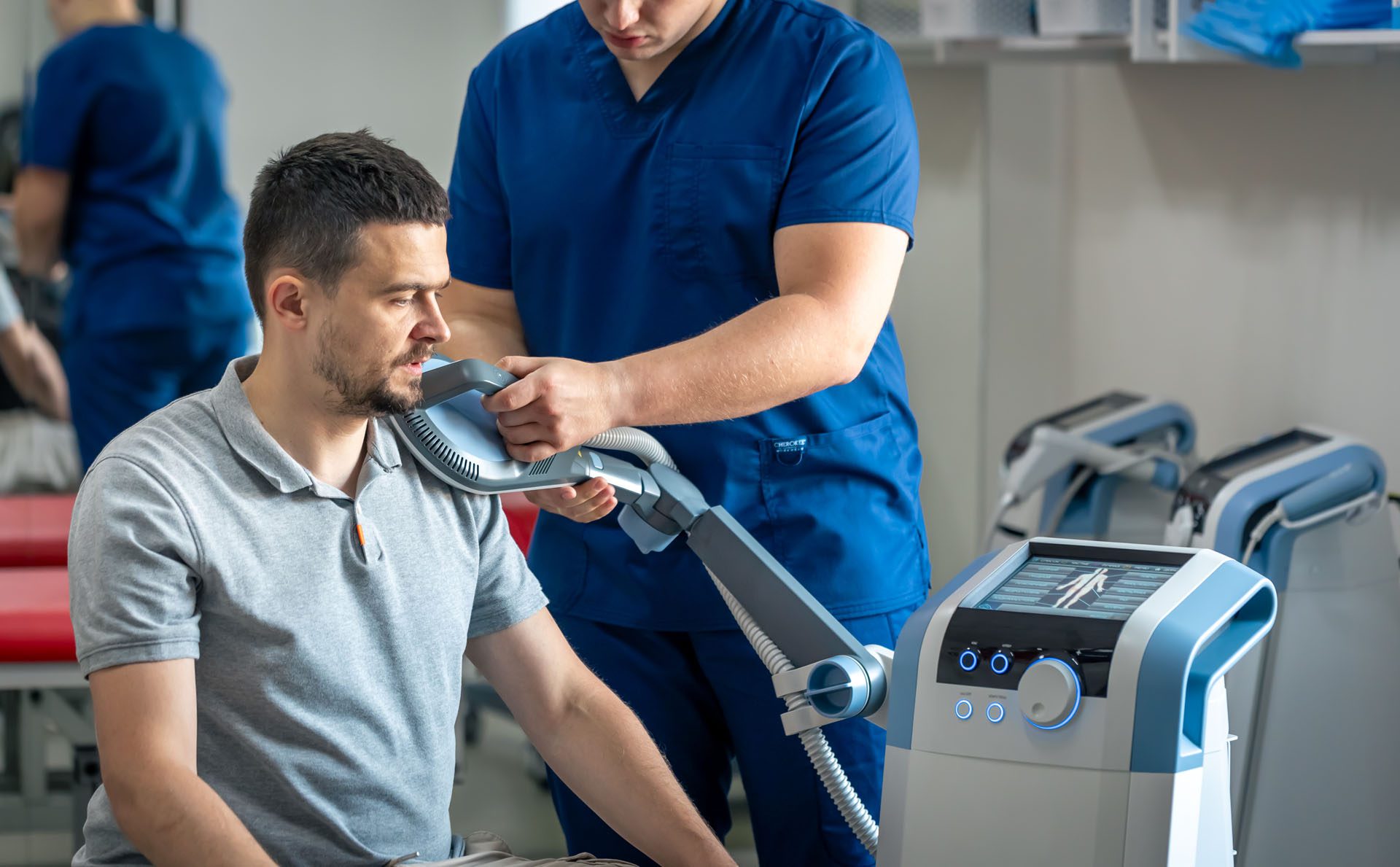The Essential Role of Sleep in Motor Vehicle Accident Recovery

Recovering from a motor vehicle accident (MVA) is a complex process that involves physical healing, emotional recovery, and lifestyle adjustments. One of the most critical yet often overlooked components of this journey is adequate sleep. Sleep is vital for the body’s natural healing processes, as it helps repair tissues, manage pain, and reduce stress. Without proper rest, recovery can be delayed, and the risk of long-term health complications increases. This article examines the role of sleep in supporting recovery, the effects of sleep deprivation, and how integrative care, led by experts such as Dr. Alexander Jimenez, can improve healing outcomes for MVA patients.
Sleep: The Foundation of Healing
Sleep is more than just a time to rest—it’s when the body does some of its most important repair work. During deep sleep stages, the body releases growth hormones that help rebuild damaged tissues, such as muscles and ligaments injured in an MVA (OrthoCarolina, 2023). The immune system also gets a boost, fighting off inflammation and potential infections that can slow recovery (Tyson Mutrux, 2023). For individuals recovering from whiplash or a back injury, this process is crucial for reducing swelling and regaining strength.
Beyond physical repair, sleep plays a big role in managing pain and stress. Accidents often cause both physical discomfort and emotional strain, which can disrupt sleep patterns. Quality sleep helps lower the body’s sensitivity to pain by reducing stress hormones, such as cortisol (Daniel Stark, 2023). It also promotes mental clarity, assisting patients to cope with the anxiety or trauma that may follow a crash. By prioritizing sleep, individuals can break the cycle of pain and sleeplessness, creating a smoother path to recovery.
Sleep deprivation, however, can derail these processes. Without sufficient rest, tissue repair slows, inflammation persists, and the immune system becomes weakened, thereby increasing the risk of chronic pain or illness (Complete Care, 2023). Lack of sleep can also impair decision-making and focus, making it harder to follow treatment plans or manage daily tasks (Tennessee Injury Attorney, 2023). For MVA survivors, getting consistent, quality sleep is a key step toward healing.
References
- Complete Care. (2023). Fatigue after accident. https://www.complete-care.com/blog/fatigue-after-accident/
- Daniel Stark. (2023). The vital role of sleep in injury recovery. https://www.danielstark.com/blog/the-vital-role-of-sleep-in-injury-recovery/
- OrthoCarolina. (2023). Sleep: The secret ingredient of injury recovery. https://www.orthocarolina.com/blog/sleep-the-secret-ingredient-of-injury-recovery
- Tennessee Injury Attorney. (2023). Sleep problems after car accident. https://www.tennesseeinjuryattorney.com/articles/sleep-problems-after-car-accident
- Tyson Mutrux. (2023). How quality sleep can speed up injury recovery. https://tysonmutrux.com/blog/how-quality-sleep-can-speed-up-injury-recovery/
Dr. Alexander Jimenez: Expertise in MVA Care
In El Paso, Texas, Dr. Alexander Jimenez, a licensed chiropractor and family nurse practitioner, brings a unique approach to treating MVA injuries. With over 25 years of experience, he combines chiropractic techniques with medical expertise to address the full scope of a patient’s condition (Jimenez, 2023a). His dual training allows him to diagnose and treat injuries with precision, using both hands-on care and advanced medical assessments.
Dr. Jimenez emphasizes the connection between sleep and recovery in his practice. He observes that patients who prioritize rest often experience faster healing and less pain compared to those with disrupted sleep (Jimenez, 2023b). His treatment plans integrate sleep hygiene advice, recognizing its role in supporting tissue repair and stress management. For example, a patient with a spinal injury might receive guidance on creating a restful environment alongside chiropractic adjustments to maximize recovery.
His approach includes advanced diagnostic tools, such as X-rays, MRIs, and functional lab testing, to identify the exact nature of injuries, including herniated discs or soft tissue damage (Jimenez, 2023c). These tools help him create tailored treatment plans that address the root causes of pain and dysfunction. Additionally, his nurse practitioner training enables him to handle legal documentation, providing detailed reports for insurance claims or personal injury cases, which reduces stress for patients navigating the aftermath of an accident (Jimenez, 2023d).
References
- Jimenez, A. (2023a). Clinical observations on MVA recovery. https://dralexjimenez.com/
- Jimenez, A. (2023b). Professional profile. https://www.linkedin.com/in/dralexjimenez/
- Jimenez, A. (2023c). WhatsApp channel updates. https://www.whatsapp.com/channel/0029VaLL6qY3rZZiMGQ0S32u/364
- Jimenez, A. (2023d). Facebook reel on recovery. https://www.facebook.com/reel/24240689962228572
Integrative Medicine for Holistic Recovery
Integrative medicine combines conventional and alternative therapies to treat the whole person, not just the injury. In the context of MVA recovery, this approach is highly effective. Chiropractic care, a cornerstone of Dr. Jimenez’s practice, utilizes spinal adjustments to correct misalignments caused by accidents, thereby relieving pain and enhancing mobility (Jimenez, 2023e). For example, a patient with whiplash might benefit from adjustments that restore neck alignment, reducing stiffness and discomfort.
Beyond chiropractic care, integrative medicine includes nutrition counseling, exercise plans, and stress management techniques. An anti-inflammatory diet can help reduce swelling in injured tissues, while targeted exercises strengthen supporting muscles (Jimenez, 2023f). These therapies work together to address the root causes of pain, such as inflammation or poor posture, rather than just masking symptoms with medication. This holistic approach also supports better sleep, which is critical for healing.
Dr. Jimenez’s use of advanced imaging ensures accurate diagnoses, allowing for precise treatment plans (Jimenez, 2023g). His ability to collaborate with other healthcare providers creates a seamless care experience, addressing both physical and emotional aspects of recovery. Patients often report improved energy, reduced pain, and better overall health, highlighting the effectiveness of this approach (Jimenez, 2023h).
References
- Jimenez, A. (2023e). Instagram reel on chiropractic care. https://www.instagram.com/reel/DMXxvgsiwAt/
- Jimenez, A. (2023f). Twitter recognition. https://x.com/threebestrated/status/1947288030055678043
- Jimenez, A. (2023g). Threads post on expertise. https://www.threads.com/@threebestratedofficial/post/DMXxwzOieix
- Jimenez, A. (2023h). Pinterest pin on health. https://www.pinterest.com/pin/1132936850022111288/
The Consequences of Sleep Deprivation
Lack of sleep after an MVA can have serious consequences. Sleep deprivation slows tissue repair, prolongs inflammation, and weakens the immune system, increasing the risk of chronic pain or infections (Walker Center, 2023). It can also worsen mental health, leading to anxiety, depression, or difficulty concentrating, which complicates recovery (JSW Law Offices, 2023). For example, a patient struggling with insomnia after a crash might experience heightened pain sensitivity, making physical therapy less effective.
Sleep problems can also affect daily life, impairing decision-making and increasing the risk of mistakes or accidents (Tennessee Injury Attorney, 2023). Dr. Jimenez often incorporates sleep strategies into his treatment plans, such as recommending consistent sleep schedules or relaxation techniques, to help patients avoid these setbacks (Jimenez, 2023a). By addressing sleep issues early, patients can stay on track for a full recovery.
References
- JSW Law Offices. (2023). Sleep problems after car accident. https://jswlawoffices.com/legal-articles/sleep-problems-after-car-accident/
- Tennessee Injury Attorney. (2023). Sleep problems after car accident. https://www.tennesseeinjuryattorney.com/articles/sleep-problems-after-car-accident
- Walker Center. (2023). The link between sleep and recovery. https://www.thewalkercenter.org/blog-posts/the-link-between-sleep-and-recovery-navigating-addictions-impact
- Jimenez, A. (2023a). Clinical observations on MVA recovery. https://dralexjimenez.com/
Conclusion: Sleep as a Healing Powerhouse
Adequate sleep is a cornerstone of recovery from a motor vehicle accident. It supports tissue repair, boosts the immune system, and helps manage pain and stress, all of which are essential for healing (Walker Center, 2023). Without enough rest, recovery can stall, and the risk of chronic health issues grows (JSW Law Offices, 2023). By prioritizing sleep, patients can enhance their body’s natural ability to heal and improve their overall well-being.
Dr. Alexander Jimenez’s integrative approach, combining chiropractic care, advanced diagnostics, and holistic therapies, maximizes recovery outcomes. His expertise in both medical and legal aspects of MVA care ensures patients receive comprehensive support, from personalized treatment plans to accurate documentation for claims (Jimenez, 2023f). By addressing the root causes of injuries and promoting healthy sleep habits, this approach enables patients to recover more quickly and lead more nutritious lives.
References
Complete Care. (2023). Fatigue after accident. Retrieved from https://www.complete-care.com/blog/fatigue-after-accident/
Daniel Stark. (2023). The vital role of sleep in injury recovery. Retrieved from https://www.danielstark.com/blog/the-vital-role-of-sleep-in-injury-recovery/
Jimenez, A. (2023a). Clinical observations on MVA recovery. Retrieved from https://dralexjimenez.com/
Jimenez, A. (2023b). Professional profile. Retrieved from https://www.linkedin.com/in/dralexjimenez/
Jimenez, A. (2023c). WhatsApp channel updates. Retrieved from https://www.whatsapp.com/channel/0029VaLL6qY3rZZiMGQ0S32u/364
Jimenez, A. (2023d). Facebook reel on recovery. Retrieved from https://www.facebook.com/reel/24240689962228572
Jimenez, A. (2023e). Instagram reel on chiropractic care. Retrieved from https://www.instagram.com/reel/DMXxvgsiwAt/
Jimenez, A. (2023f). Twitter recognition. Retrieved from https://x.com/threebestrated/status/1947288030055678043
Jimenez, A. (2023g). Threads post on expertise. Retrieved from https://www.threads.com/@threebestratedofficial/post/DMXxwzOieix
Jimenez, A. (2023h). Pinterest pin on health. Retrieved from https://www.pinterest.com/pin/1132936850022111288/
JSW Law Offices. (2023). Sleep problems after car accident. Retrieved from https://jswlawoffices.com/legal-articles/sleep-problems-after-car-accident/
OrthoCarolina. (2023). Sleep: The secret ingredient of injury recovery. Retrieved from https://www.orthocarolina.com/blog/sleep-the-secret-ingredient-of-injury-recovery
Tennessee Injury Attorney. (2023). Sleep problems after car accident. Retrieved from https://www.tennesseeinjuryattorney.com/articles/sleep-problems-after-car-accident
Tyson Mutrux. (2023). How quality sleep can speed up injury recovery. Retrieved from https://tysonmutrux.com/blog/how-quality-sleep-can-speed-up-injury-recovery/
Walker Center. (2023). The link between sleep and recovery. Retrieved from https://www.thewalkercenter.org/blog-posts/the-link-between-sleep-and-recovery-navigating-addictions-impact














